
A re you wondering how to start a sports blog?
This guide is your ultimate playbook for how to start a sports blog. From initial setup to expert tips on growing your audience and ways to turn your passion for sports into a profitable venture, I’ve got you covered.
If time is of the essence, you can sprint to the key takeaways section with our table of contents.
But if you’re all geared up and ready to go the distance, sports enthusiasts, it’s time to step into the arena of sports blogging!
In This Guide:
What is a Sports Blog?
A sports blog is a type of website where you can write about the latest sports news or share your opinions on sports-related topics.
As a sports blogger, you can describe what happens on the field or court during games. You can also share your thoughts on trades, coaching tactics, draft picks, sports scandals, and much more.
To get a better understanding, here are some sports blog examples:
FanSided

FanSided is a family-owned sports blog started by two brothers that wanted to write about their favorite football team, the Kansas City Cheifs.
Now, FanSided creates editorial content that goes beyond football. It covers everything from basketball to racing to mixed martial arts and even lifestyle topics.
Bleacher Report
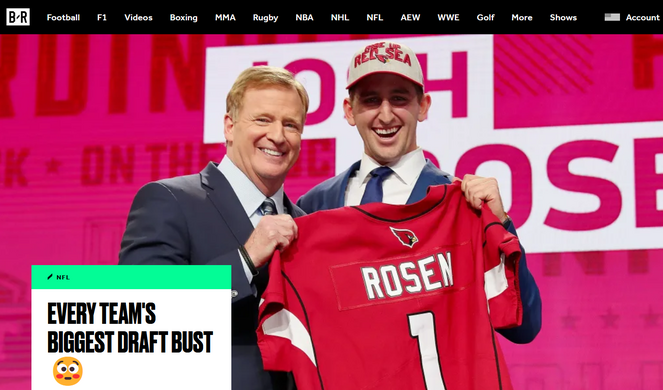
Bleacher Report is a successful sports journalism blog that covers all of the latest major sports news including rugby, tennis, golf, and much more.
The Bleacher Report shares game highlights and scores along with expert analysis and opinion pieces.
Raptors Cage

Raptors Cage is a popular sports blog that writes features, opinions, game coverage, and news all about the Toronto Raptors basketball team.
Raptors Cage also has a podcast so that fans can listen to the latest news on the go.
Now that you have a better idea of what a sports blog is, we’ll show you how to make your own.
How to Start a Sports Blog and Make Money (Step-by-Step)
1. Choose a Niche
The first step to starting a sports blog is to choose your niche. A blog niche is simply the topic you will write about on your blog.
You can choose to write about various sports topics on your blog like baseball, soccer, basketball, hockey, etc.
But following all of the teams, events, and players in the world of sports can be difficult.
So, you might want to narrow it down to a specific sport when you’re first starting out. You can also narrow it down even further to a certain league, sports team, or major sporting event to set your blog apart.
By picking a specific niche, you can better manage your blog, present yourself as an expert, and attract loyal readers more easily.
Here’s a quick list of sports blogging niches for inspiration:
- Major League Baseball Blog
- Minor League Baseball Blog
- Olympic Games Sports Blog
- Formula 1 Blog
- English Premier League Blog
- Indian Premier League Blog
- Chicago Bulls Blog
- New England Patriots Blog
- Extreme Sports Blog (Motocross, Free Climbing, Base Jumping)
- Specialized Sports Blog (Archery, Chess, Equestrian Sports)
Think about what you’re most passionate and knowledgeable about to help you decide on a niche.
2. Pick a Name for Your Sports Blog
Next, you need to pick a good name for your blog.
The name of your sports blog should fit with the niche you decided on in the first step. For example, if your niche is skateboarding, a name like World of Skateboarding makes more sense than a name like Team Sports News.
The name that relates to skateboarding will help visitors immediately understand what your blog is about.
Plus, by using keywords related to skateboarding in your name, it tells search engines what your blog is about. This gives you a better chance of showing up in search results and helps people find your website easier.
If you need help coming up with a great blog name, you can use a blog name generator like Nameboy.
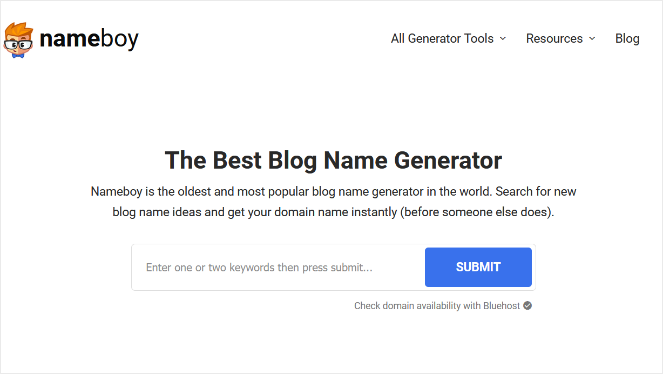
With this free tool, all you have to do is enter one or two keywords related to your niche and click the Submit button.
Then, Nameboy will automatically provide you with potential names for your blog.
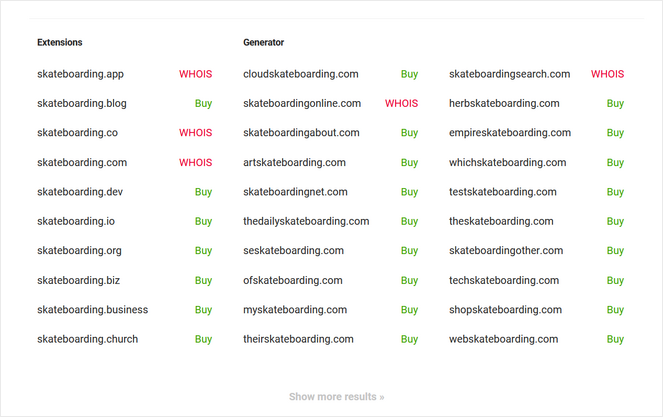
Nameboy will also tell you if your desired name is available through Bluehost so that you know whether or not you can get that domain name for your blog. We’ll explain more about that later…
Need more tips? Check out this guide on how to come up with a blog name.
Once you’ve decided on your niche and a name, it’s time to set up your blog.
3. Set up a WordPress Blog
To set up a blog, you need three things:
- A blogging platform
- Blog hosting
- A domain name
This might seem complicated and expensive. But we’ll review each part and show you that it’s easy and affordable with the right tools.
Pick a Blogging Platform
First, you need to choose a blogging platform.
Many new bloggers think that choosing a free platform for their blog is the easiest way to get started. But there are a lot of downsides.
With a free platform, you won’t be able to get a professional domain name, you’re limited as far as the customizations you can make to your blog, and you won’t be able to make money from it.
That’s why we always recommend using WordPress.org for your blogging platform.
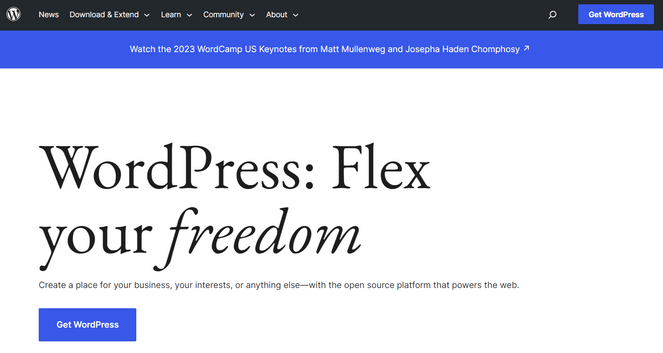
WordPress.org is the most popular blogging platform in the world, powering more than 43% of all sites across the web.
With a self-hosted WordPress.org blog, you have complete control. You can customize your blog in any way you want with free WordPress plugins and themes. Plus, you can make money from your blog without limitations.
WordPress.org is also easy to install and it’s 100% free to use. All you need to pay for is blog hosting and a domain name, which we’ll go over next.
Be careful not to confuse WordPress.org with WordPress.com. To learn the differences, check out our post on WordPress.com vs. WordPress.org.
Choose a Blog Host
Blog hosting is the service that will store your website on its servers. This is what makes it possible for your blog to be online and get visited by users.
There are many blog hosting services on the market, but we recommend Bluehost.

Bluehost offers the best and most reliable web hosting service. In fact, it’s officially recommended by WordPress.org.
Bluehost is also easy to use, thanks to its one-click WordPress installation. This takes all the hassle out of setting up your blog.
Plus, Bluehost is affordable, and Blog Tyrant readers get a special discount of 60% off, which comes with a free domain name, free SSL certificate, and more!
Exclusive offer for BlogTyrant readers
We have partnered up with Bluehost to get 60% off for our readers! You also get to register a FREE domain for a year which normally costs around $14.99 per year.
Claim this Exclusive Bluehost offerThis Bluehost deal comes with everything you need to start a successful sports blog.
How to Set up Your Blog with Bluehost
To get started, click on the exclusive Bluehost offer link above. Once you’re on the website, click on the Get Started button, as shown in the screenshot below:

On the next page, you can choose a pricing plan. Pick whatever pricing plan suits your needs and budget.
Next, you need to choose your domain name. You can either create a new domain name or use an existing domain name that you own.
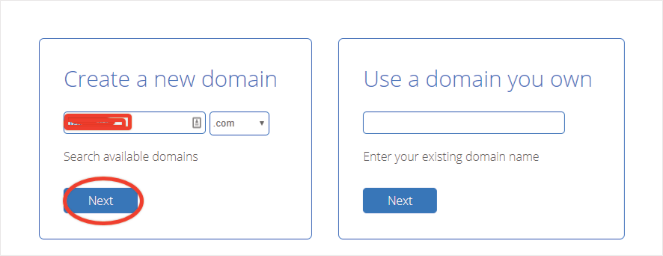
If you haven’t already purchased a domain name previously, type the domain name you decided on in step #2 under the Create a new domain option. Then, click Next to continue.
In the next step, enter your account information and choose your account plan. The 36-month account plan will give you the best value.
Then, enter your payment information to complete the purchase. After that, you’ll get an email with your login details.
When you’re logged into your Bluehost account, go to the My Sites tab. Click Log into WordPress and enter your login credentials.
Next, click on Create Site.
This will launch the WordPress installation wizard. Simply follow the steps in the wizard to set up your site.
If you want step-by-step instructions, check out our guide on how to install WordPress on Bluehost.
Now that your blog is set up let’s customize it and make it look amazing…
4. Design and Customize Your Blog
As mentioned, you can use WordPress themes and plugins to customize your sports blog.
We’ll go over both in this section and share some recommendations.
Choose a WordPress Theme
WordPress themes will handle the design of your blog and give it a professional look in an instant. This is important because if your blog doesn’t look nice, many people won’t even bother reading it.
There are tons of free and premium WordPress themes to choose from. So, to help you out, we’ll share a few of our favorites.

SeedProd isn’t just a WordPress theme. It’s a complete theme builder. That means that you can create a custom theme for your sports blog that doesn’t look like anyone else’s.
It’s super easy to use and is trusted by over a million site builders. You can get started with one of the 300+ professionally designed theme templates. You can also start from scratch using the drag-and-drop theme builder. SeedProd comes with ready-made page blocks, smart sections, and template tags that make designing your blog a breeze.
Read this tutorial to see just how easy it is to create a custom WordPress theme with SeedProd.

Astra is one of the most popular themes of all time. It’s fast and lightweight, so it won’t slow down your site. It also comes with various ready-made website templates that you can import in one click. Then, you can easily customize the template images, text, and other elements to match your brand.

OceanWP is another popular WordPress theme with over 5,000,000 downloads. It comes with lots of pre-made WordPress website templates you can use, including templates designed specifically for sports websites. It’s also beginner-friendly and easy to customize.
Check out our list of the best WordPress themes for bloggers for more recommendations.
Installing Essential WordPress Plugins
WordPress plugins let you add additional features and functions to your sports blog.
Just like themes, there are many free and premium WordPress plugins to choose from.
Here are a few must-have WordPress plugins you need to improve your blog:
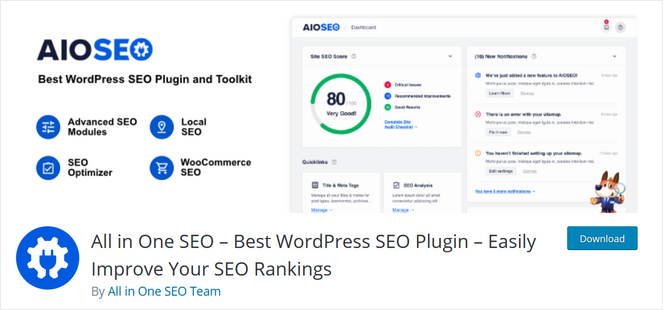
All in One SEO (AIOSEO) is the best SEO plugin on the market. This plugin will help you optimize your entire website for better search rankings in less than 10 minutes.
It also comes with other powerful features to help you increase your website traffic, such as XML sitemaps, local SEO, rich snippets schema, TruSEO on-page analysis, and much more.
Find out more in our detailed AIOSEO review.
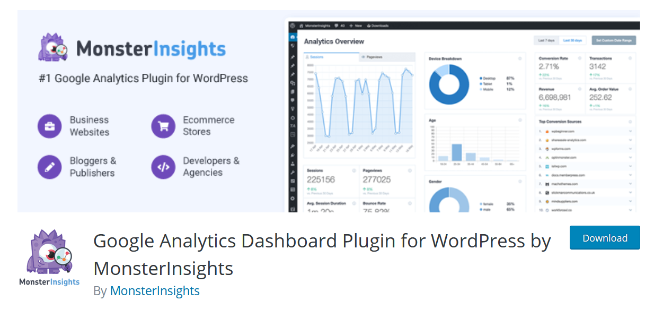
MonsterInsights is a popular plugin with over 3,000,000+ downloads. It lets you install Google Analytics on your WordPress blog so that you can easily monitor your website traffic.
You can also view easy-to-read reports about other important metrics like new vs. returning visitors, your most popular posts and pages, how people found your site, and more.
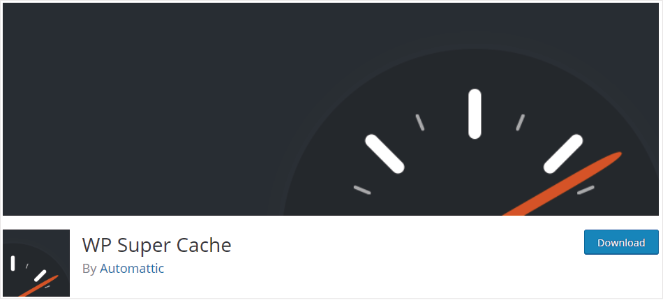
WP Super Cache will help you speed up your blog and make it load faster for a better user experience. With this plugin, you no longer have to worry about having a slow blog, which could drive readers away.
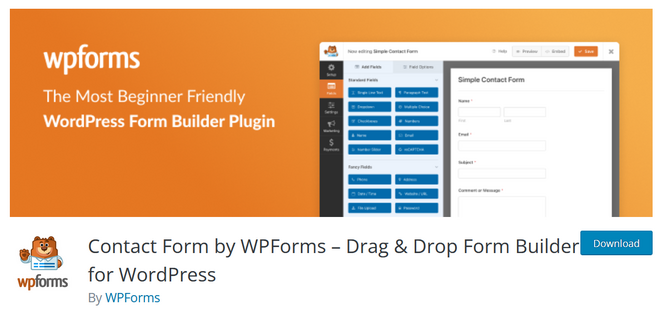
WPForms is the best drag-and-drop form builder for WordPress. As a blogger, you should have a contact form on your site so your audience can easily contact you.
WPForms comes with ready-made form templates, tons of form fields you can use, entry management, spam protection, and much more.
If you upgrade to a premium version of WPForms, you can also create surveys and polls for your readers.

Sucuri is a popular security plugin that will scan your site regularly to protect it from hackers and malware. It has features like file integrity monitoring, remote malware scanning, blocklist monitoring, and more.
After putting so much work into it, you’ll want to protect your blog.
If you’re new to WordPress, take a look at our guide on how to install a WordPress plugin for step-by-step instructions.
5. Write Your First Blog Posts
Alright, now it’s time to start writing content. After all, you want the people who visit your blog to have something to read!
When you start your sports blog, we have multiple guides you can follow to learn how to write amazing blog posts:
- How to Write a Good Blog Post
- How to Structure the Perfect Blog Post
- The Ultimate Blog Post Checklist
And if you’re not sure what to write about, think back to the niche you chose for your sports blog.
If you choose to create a blog about professional ice hockey (NHL), start watching some games and writing recaps.
You can also look at other relevant blogs to get some ideas for your own blog. For example, this professional hockey blog called Pro Hockey News has blog posts about the season’s top players, trade rumors, industry news, and more.

There are also many free blog topic research tools that will help you find blog post ideas that your audience is already interested in and searching for.
Use these tips to create a list of blog post ideas and then start writing them!
6. Promote Your Sports Blog
Your blog is now set up and you’ve started writing posts, awesome!
But how will people discover your content?
Instead of sitting around and waiting for people to find your blog, you need to promote it to get more traffic and readers.
Marketing your blog might sound expensive, but it doesn’t have to be.
Here are some free and affordable ways to promote your blog:
Post on Social Media
Lots of sports fans are active on social media platforms, especially Twitter, searching for news about their favorite team and talking about the latest game.
So, you should be there too, sharing your opinion and promoting your posts.
Here’s how The Athletic UK promotes its latest blog post on Twitter:

Your social media posts should include an eye-catching image to grab attention, a caption describing the post and why people should read it, and relevant hashtags to make it easier for people to find.
Take a look at our social media marketing guide for more tips.
You can use a plugin like Smash Balloon to grow your social media following and engagement. Check out our Smash Balloon review to learn more.
Join Sports Forums
Aside from social media platforms, you can also join sports forums to promote your site. Forums are online discussion boards where fans can ask questions, share their thoughts, and more.
Depending on the rules of the particular forum, you may be able to add a link to your blog posts when you participate in conversations.
You can find forums to join by doing a simple Google search. For example, when you search “golf forums,” a ton of active forums will show up in the search results.
Guest Post on Other Blogs
Guest posting is also a great way to introduce your blog to a whole new audience of sports enthusiasts.
Guest posting is when you write a blog post on someone else’s website. Typically, the guest post you write will have an author bio in it with information about you and a link to your website.
Just be sure to guest post on a blog that’s in a similar niche to yours. For example, as a sports blogger, you shouldn’t guest post on a fashion blog because the audience there won’t be interested in your content.
For more information, check out our guide to guest posting.
Create an Email Newsletter
Instead of only promoting your blog posts to new people, remember to promote them to your existing readers as well.
Your existing readers are already fans of your blog so they’re the most likely to read your posts, comment on them, and share them with family and friends.
So, we recommend creating an email newsletter. With an email newsletter, you can send a direct message to your fans every time you publish a new post. This will help you increase repeat visits to your blog.
To encourage people to sign up for your email newsletter, you can use a lead generation tool like OptinMonster.
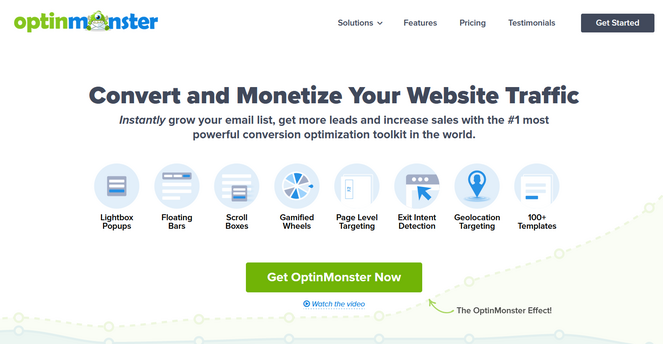
OptinMonster lets you create beautiful lead capture forms and popups to turn website visitors into subscribers. In the popup example below, users receive a coupon in exchange for their email address.

OptinMonster comes with professionally-designed templates, multiple form types, drag and drop functionality, exit-intent technology, powerful campaign triggers, and much more.
You can find out more in our OptinMonster review.
7. Monetize Your Blog
Lastly, you might be asking yourself questions like: How do sports bloggers make money? And, are sports blogs profitable?
Well, simply having a sports blog doesn’t mean you’ll earn money. You need to take the proper steps to monetize your blog if you want to make money online.
So, how do you do it?
Here are some proven monetization methods you can use:
Google Adsense
Displaying ads with Google Adsense is one of the easiest ways to monetize a new blog.
All you need to do is sign up for a free Google Adsense account. Then, Google will display ads on your blog that are targeted to your audience and content. The more clicks the ads get, the more money you make.
Follow this tutorial to learn how to properly add Google Adsense in WordPress.
Affiliate Marketing
Affiliate marketing is a popular money-making strategy for bloggers. It involves promoting and/or reviewing a company’s products on your blog. Every time someone clicks on one of your affiliate links and buys the product, you earn a commission.
As a sports blogger, you’ll want to promote products that are relevant to your readers, like athletic wear or sports equipment, in order to maximize your earning potential.
To become an affiliate marketer, you can join affiliate networks to connect with a wide range of merchants in one place. Or, you can go to one of your favorite brands and sign up to become an affiliate directly on their site.
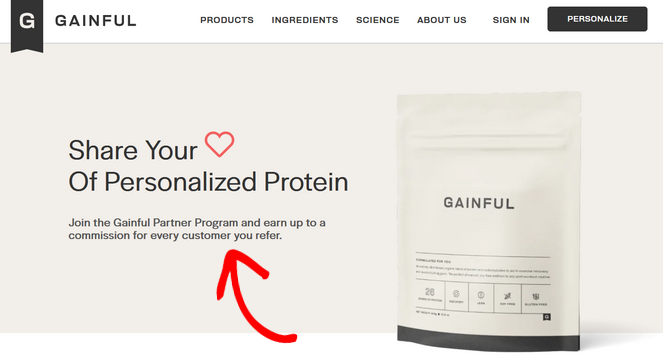
There’s usually an “Affiliates” page, like the one above from Gainful, linked in the footer area of the website.
Memberships
Another great way to make money from your blog is by creating memberships. With memberships, users have to pay a subscription fee in order to access your premium content, exclusive products, online courses, or members-only forums.
In this example, The Chess Website is selling monthly and yearly memberships that give users exclusive chess videos, puzzles, and practice boards:
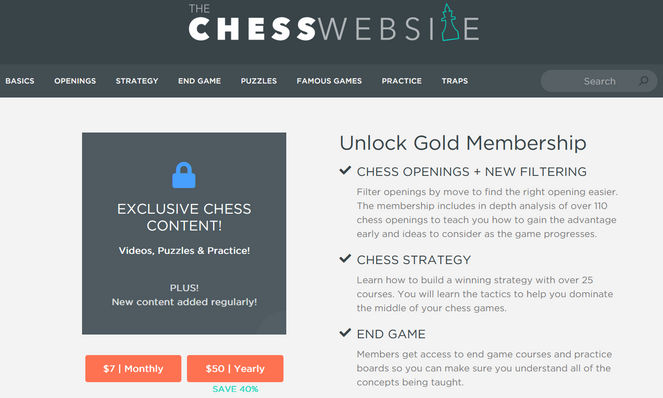
To create a similar membership feature on your own blog, you can use MemberPress.

MemberPress is the best membership plugin for WordPress. It’s used by thousands of website owners who together have sold over $1 billion in memberships.
MemberPress is beginner-friendly and easy to set up. It has powerful access rules that make it simple to control who sees your content and what content they can see, based on the subscription plan they’ve purchased.
Other features include customizable coupons, pre-made pricing pages, automated billing, an online course builder, and more.
If you need help setting up memberships, follow along with this tutorial on how to start a profitable membership site.
Also, remember that it takes time to earn money from your blog. But, with these strategies and hard work, you’ll soon start to see a profit.
Key Takeaways For Sports Bloggers
- Sports blogging encompasses sharing insights, analytical pieces, and commentary on various sports, covering local, national, and international events.
- Selecting a specific sport or focus area within sports can help differentiate your blog and attract a dedicated readership.
- Choosing a creative and catchy name for your sports blog is essential for making a strong first impression.
- Initiating your blog with WordPress.org for greater customization features and exploring potential monetization avenues is advisable.
- Bluehost is the recommended web hosting service for new WordPress sports blogs, offering Blog Tyrant readers special discounts and complimentary domain registration.
- Implementing a professional theme for your blog, like SeedProd, can significantly improve the visual appeal and user experience.
- Essential WordPress plugins like WPForms, All in One SEO (AIOSEO), and MonsterInsights will enhance your blog’s functionality and its performance on search engines.
- Promoting your blog through social media platforms such as Instagram, Twitter, and Facebook is crucial for boosting the visibility of your sports blog and engaging with a broader audience.
- Creating an email list with a great lead generation tool like OptinMonster allows for a direct line of communication with your blog’s most loyal readers, keeping them informed about the latest posts and exclusive content.
- Monetization strategies for sports bloggers include displaying advertisements, engaging in affiliate marketing with sports brands and retailers, creating sponsored content, and offering digital products or memberships.
Final Thoughts on How To Start a Sports Blog
That’s a wrap!
A sports blog is a great way to share this with the world if you’re passionate about sports.
Hopefully, this tutorial has helped you learn not only how to create a sports blog, but how to make your blog profitable so you can earn money from your passion for sports as well.
If you enjoyed this post, be sure to check out our post on 101 blogging tips for beginners. It’s the perfect post to bookmark and refer back to during the early stages of your sports blog journey.
And don’t forget to sign up for our email newsletter for more helpful blogging tips!


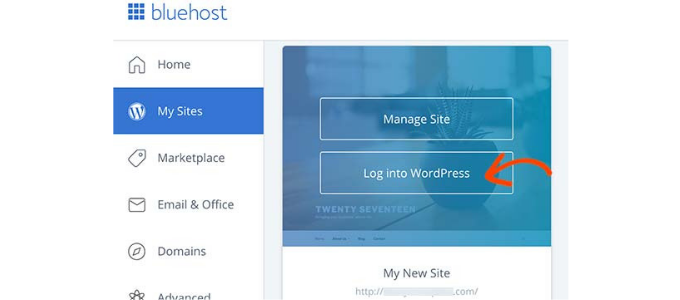
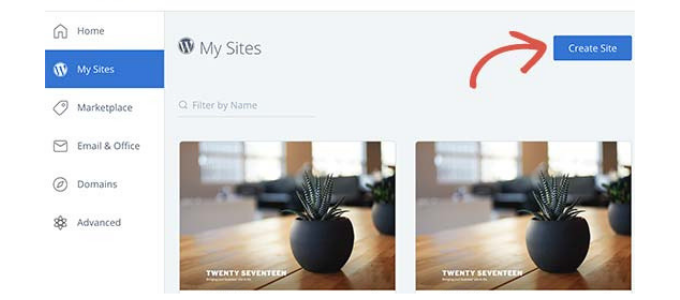

Good to learn such a valuable information
I love to write a blog on cricket because I love cricket and I’m a cricket addict. I just wanted to know how to write a blog on sports and now I know how to do it so I’m going to write blogs on cricket from now. Thanks to you
Hey Hania, that’s great! Glad you found the tutorial helpful!
Hi Dear,
Starting a sports blog can be a thrilling journey, and this comprehensive guide provides valuable insights for beginners. From content creation to monetization, it covers it all. Highly recommended! Thanks for Sharing!